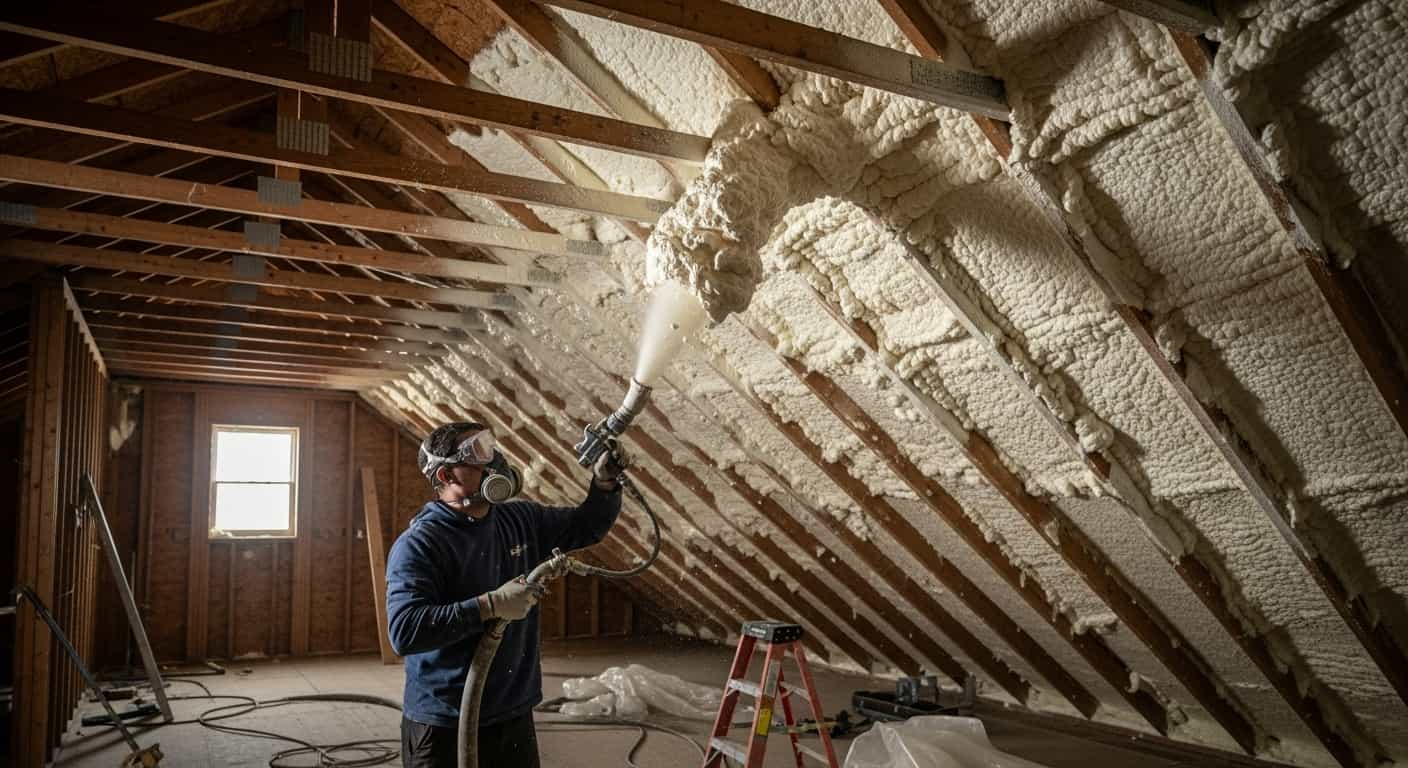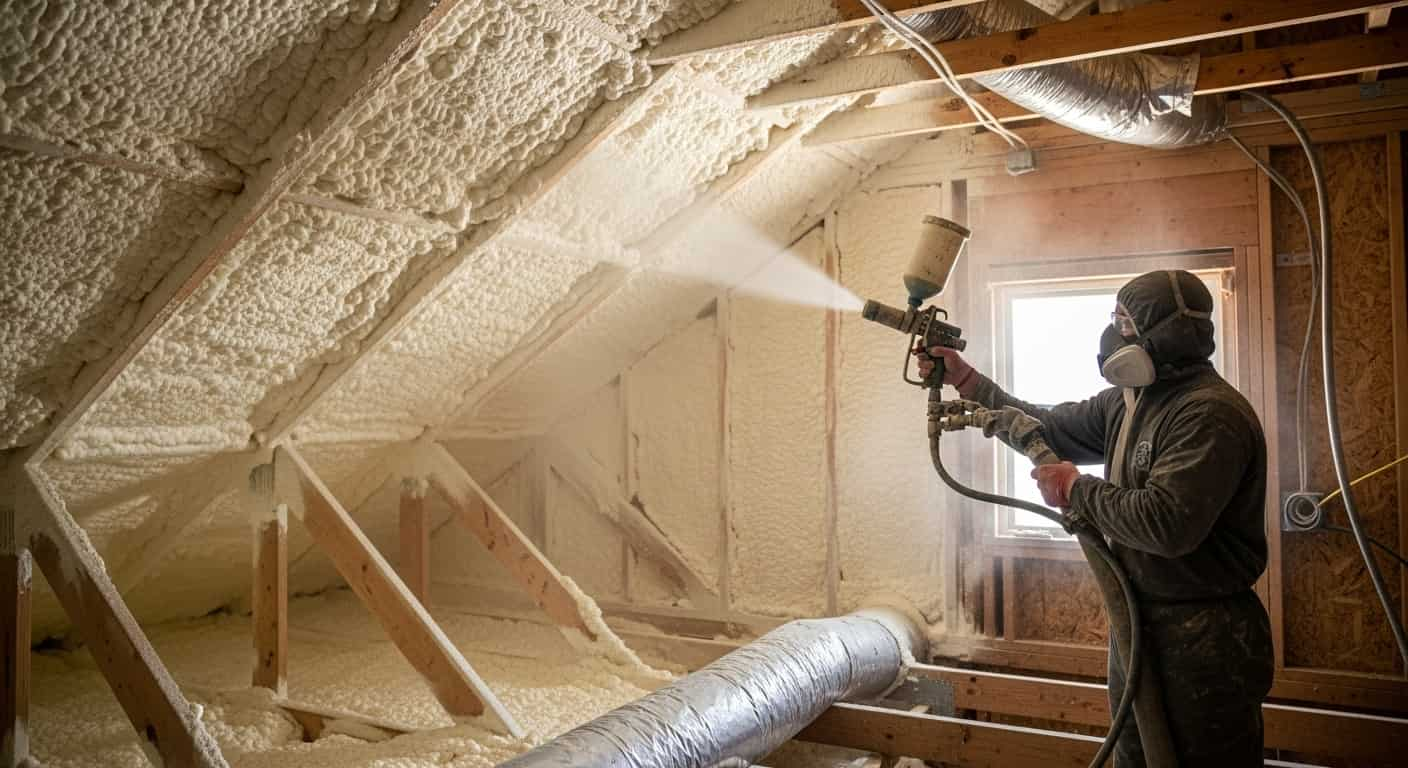Maintaining a comfortable indoor environment involves more than just heating and cooling systems. One often overlooked factor in home comfort is humidity control. The right insulation plays a crucial role in regulating humidity levels, preventing moisture-related issues such as mold growth, wood rot, and poor air quality. Among the various insulation types available, spray foam insulation stands out for its exceptional ability to control moisture and maintain optimal humidity levels.
The Role of Insulation in Humidity Control
Insulation acts as a barrier that helps regulate temperature and moisture levels inside a home. It prevents outdoor air from infiltrating the indoor space and minimizes temperature fluctuations, which can lead to condensation buildup. Proper insulation helps maintain stable humidity levels by reducing excessive moisture transfer between different areas of the house.
How Different Insulation Types Affect Humidity
There are several types of insulation available, each with varying impacts on humidity levels:
- Fiberglass Insulation: This common insulation type offers thermal resistance but does not provide an air-tight seal. As a result, moisture can still infiltrate the home, leading to potential condensation issues.
- Cellulose Insulation: Made from recycled paper products, cellulose insulation is treated with fire retardants and can absorb moisture. While it offers decent insulation, its ability to retain moisture can be problematic in humid conditions.
- Spray Foam Insulation: This advanced insulation material provides a superior air seal, effectively preventing moisture intrusion and humidity fluctuations. Spray foam insulation expands upon application, filling gaps and cracks that allow air and moisture penetration.
Benefits of Spray Foam Insulation for Humidity Control
Spray foam insulation is widely recognized as one of the most effective insulation options for controlling humidity. Here’s how it helps:
Creates an Airtight Seal
Unlike traditional insulation materials, Spray foam insulation expands upon application, sealing gaps, cracks, and openings where air and moisture could enter. This airtight barrier prevents excessive humidity from seeping into the home, reducing the risk of mold and mildew growth.
Also Read: How Spray Foam Insulation Affects Indoor Air Quality
Reduces Condensation Problems
Condensation forms when warm, humid air meets a cold surface. Poor insulation allows temperature fluctuations that contribute to condensation on walls, ceilings, and windows. Spray foam insulation helps maintain a consistent indoor temperature, minimizing the risk of condensation buildup and the potential for moisture damage.
Prevents Mold and Mildew Growth
High humidity creates the perfect breeding ground for mold and mildew, which can lead to structural damage and health problems. Because Spray foam insulation effectively blocks moisture infiltration, it reduces the conditions necessary for mold growth, improving indoor air quality.
Enhances HVAC Efficiency
Humidity control directly impacts the efficiency of heating, ventilation, and air conditioning (HVAC) systems. When humidity levels are stable, HVAC systems do not have to work as hard to maintain comfortable indoor conditions. Spray foam insulation enhances energy efficiency by preventing unwanted moisture fluctuations, leading to lower energy bills.
Prevents Structural Damage
Excessive moisture can weaken wooden structures, cause paint to peel, and lead to deterioration of building materials. Spray foam insulation helps preserve the integrity of your home by keeping humidity levels in check and preventing moisture-related structural issues.
How to Ensure Proper Insulation for Humidity Control
To maximize the benefits of insulation for humidity regulation, consider the following steps:
- Assess Your Current Insulation: Check for signs of poor insulation, such as drafts, condensation, fluctuating indoor temperatures, and mold growth. If your home has outdated or ineffective insulation, upgrading to a more effective solution like Spray foam insulation can significantly improve humidity control.
- Seal Air Leaks: Gaps and cracks in walls, ceilings, and floors allow outside air and moisture to enter the home. Sealing these openings with Spray foam insulation ensures an airtight barrier that helps stabilize humidity levels.
- Improve Ventilation: Proper ventilation works alongside insulation to regulate humidity. Ensure that your home’s ventilation system, including exhaust fans and air vents, is functioning effectively to expel excess moisture.
- Use a Dehumidifier if Necessary: In particularly humid climates, using a dehumidifier in conjunction with insulation can help maintain optimal indoor moisture levels.
- Hire a Professional Insulation Contractor: Installing insulation, especially Spray foam insulation, requires expertise to ensure proper application. Hiring a professional ensures that the insulation is correctly installed to provide maximum humidity control benefits.
Contact Foam Insulation Solution for Spray Foam Insulation
Humidity control is essential for a healthy, comfortable, and energy-efficient home. Insulation plays a key role in managing indoor moisture levels by preventing unwanted air and moisture infiltration. While various insulation types offer different benefits, Spray foam insulation stands out as one of the most effective options for regulating humidity.
Are you looking for spray foam insulation experts? Foam Insulation Solution is at your service. Our professionals have the tools and expertise to install spray foam insulation. Contact us today and talk to our experts.







